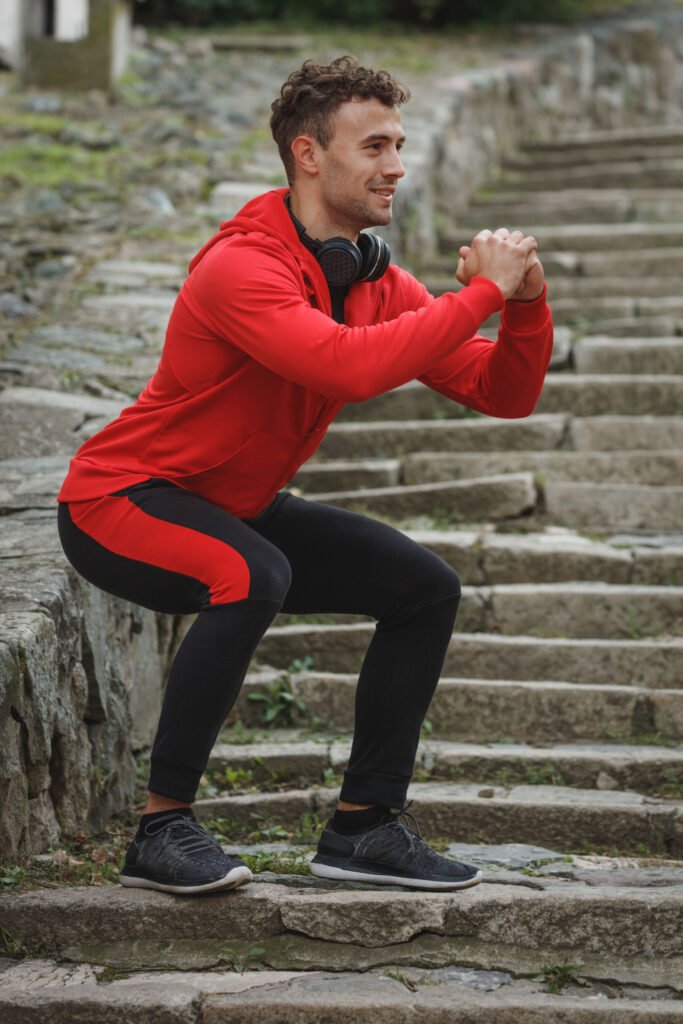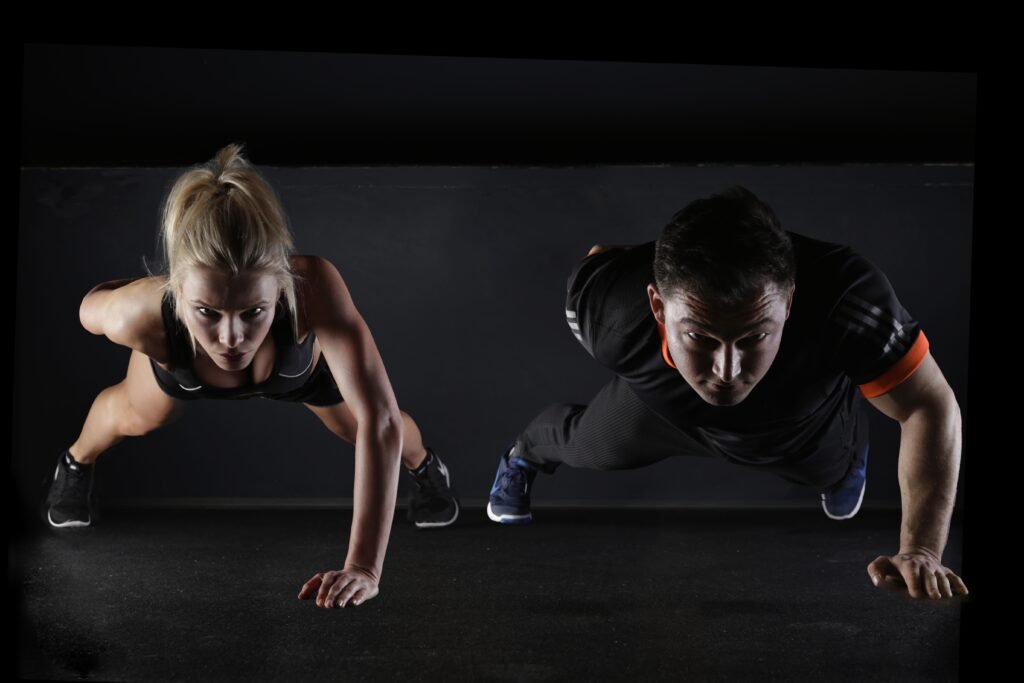Squatting: The Ultimate Exercise for Strength and Wellness
Squats are a powerhouse exercise that offers benefits far beyond the lower body. Not only do they enhance strength and muscle tone, but they also contribute significantly to overall health and fitness. Whether your goal is to build muscle, boost strength, improve balance, or enhance mobility, squats are a must. This article dives into the multifaceted health benefits of squats, supported by scientific insights and expert tips to help you master this essential movement.
Health Benefits of Squats
1. Building Strength and Muscle Mass
Squats are a compound movement that engages multiple major muscle groups, including the quadriceps, hamstrings, and glutes. They also activate the core, lower back, and, with specific variations, even parts of the upper body. The multi-muscle engagement involved in squatting helps stimulate growth and strength across the body (Schoenfeld, 2010). For example, a deep squat works both the thighs and glutes more intensely, offering a greater strength-building stimulus.
Variations:
- Front Squats: Target the quadriceps more intensely while engaging core stability.
- Sumo Squats: Emphasize the inner thighs and glutes, which can improve balance and hip strength.
Tip: For optimal muscle growth, gradually increase the weight or resistance. Bodyweight squats are excellent for beginners, but adding weights, such as dumbbells or barbells, helps advance progress.
2. Boosting Metabolism and Fat Loss
The intense muscle engagement in squats leads to an increased metabolic rate, which promotes calorie burning both during and after exercise. Squats can significantly contribute to fat loss, especially when combined with high-intensity training. Incorporating squats into HIIT workouts, for example, can maximize your metabolic boost (Escamilla, 2001).
Tip: Add squats into circuit training or HIIT routines for an intense mix of strength and cardio to elevate calorie burn.
3. Enhancing Cardiovascular Health
While typically associated with weight training, squats also offer cardiovascular benefits. Performing squats increases your heart rate, enhancing blood circulation and delivering essential oxygen and nutrients to muscles and organs. This cardio-like effect supports cardiovascular health and boosts endurance (Faigenbaum et al., 2009).
Tip: Incorporate squats into a HIIT routine or practice high-rep squats to amplify cardiovascular benefits further.
4. Improving Functional Movement
Squats are essential for functional fitness, strengthening muscles and joints in ways that translate to daily movements like bending, lifting, and climbing. The dynamic muscle coordination required in squats improves mobility, stability, and coordination, making everyday tasks easier and safer (Häkkinen et al., 2000).
5. Supporting Joint Health and Flexibility
When performed with proper form, squats promote joint health by stimulating the production of synovial fluid, which lubricates the joints and nourishes cartilage. This effect can reduce stiffness and the risk of joint-related issues. Additionally, squats enhance flexibility in the hips, knees, and ankles, improving range of motion (Karmali et al., 2010).
Tip: To maximize joint health benefits, focus on keeping your knees in line with your toes and avoid excessive forward lean during the movement.
6. Increasing Hormonal Balance
Resistance exercises like squats trigger the release of key hormones, including testosterone and growth hormone, crucial for muscle growth, strength, and metabolic health. The hormonal response from squatting supports enhanced fitness outcomes and contributes to long-term health benefits (Karmali et al., 2010).
7. Enhancing Mental Well-being
Physical activity, including resistance exercises like squats, has been shown to improve mental health. The release of endorphins during squats can elevate mood and reduce symptoms of stress, anxiety, and depression. Moreover, squats can boost confidence and a sense of achievement as you progress in your fitness journey (Faigenbaum et al., 2009).
8. Improving Posture and Balance
A strong core is crucial for maintaining proper posture and balance. Squats strengthen the core muscles, which aids in keeping the spine aligned and stable, supporting healthy posture and reducing the risk of back pain. Good balance and posture are essential for injury prevention and overall body mechanics (Schoenfeld, 2010).
Common Mistakes to Avoid
- Knees Caving In: Allowing the knees to cave inward places undue strain on the knees and can lead to injury. Focus on keeping your knees aligned with your toes throughout the movement.
- Leaning Too Far Forward: Excessive forward lean can compromise lower back health and reduce squat effectiveness. Engage your core and keep your torso as upright as possible to target the glutes and legs properly.
- Inadequate Depth: Shallow squats limit engagement of the glutes and hamstrings. Aim for a depth where your thighs are parallel to the floor or lower, provided you maintain proper form.
Tip: Prioritize proper technique over weight. Learning correct squat form will enhance results and help prevent injuries.
Incorporating Squats Into Your Routine
- Warm-Up: Always begin with a 5-10 minute warm-up to prepare your muscles and joints. This can include light cardio or dynamic stretches.
- Start with Bodyweight: For beginners, bodyweight squats are ideal. Focus on perfecting your form before adding weight.
- Use Varied Squat Types: Mix in different squat variations—such as goblet squats, Bulgarian split squats, and jump squats—to engage various muscle groups and add variety.
- Progress Gradually: As your strength and confidence improve, gradually increase weight or try more challenging variations to continue making gains.
Practical Tips for Maximizing Squat Benefits
- Consistency: Incorporate squats into your workout at least twice a week for the best results.
- Challenge Yourself: Increase weight or resistance when you feel comfortable, and explore advanced variations to keep progress steady.
- Focus on Form: Proper form is key to unlocking the full benefits of squats. Consider working with a trainer if you’re unsure about your technique.
By making squats a regular part of your fitness routine, you can enjoy a range of benefits, from enhanced muscle strength to improved mental well-being. Embrace this foundational exercise and unlock transformative health results with each rep!
References
- Schoenfeld, B. J. (2010). Squatting Kinematics and Kinetics and Their Application to Exercise Performance. Journal of Strength and Conditioning Research, 24(12), 3497-3506. https://doi.org/10.1519/JSC.0b013e3181bac2d7
- Escamilla, R. F. (2001). Knee Biomechanics of the Dynamic Squat Exercise. Medicine & Science in Sports & Exercise, 33(1), 127-141. https://journals.lww.com/acsm-msse/Fulltext/2001/01000/Knee_Biomechanics_of_the_Dynamic_Squat_Exercise.20.aspx
- Faigenbaum, A. D., et al. (2009). Youth Resistance Training: Updated Position Statement Paper from the National Strength and Conditioning Association. Journal of Strength and Conditioning Research, 23(Suppl 5). https://journals.lww.com/nsca-jscr/Fulltext/2009/08001/Youth_Resistance_Training__Updated_Position.2.aspx
- Karmali, S., et al. (2010). Hormonal Response to Resistance Exercise in Men. Journal of Strength and Conditioning Research, 24(6), 1716-1721. https://doi.org/10.1519/JSC.0b013e3181ddf77b
- Häkkinen, K., et al. (2000). Neuromuscular Adaptations During Prolonged Strength Training, Detraining and Retraining in Middle-aged and Elderly People. European Journal of Applied Physiology, 83(1), 51-62. https://link.springer.com/article/10.1007/s004210000269



